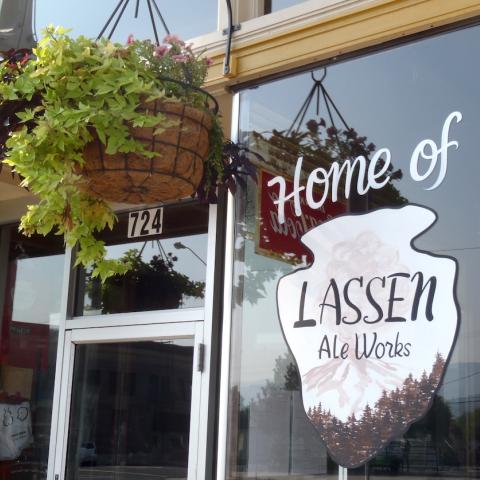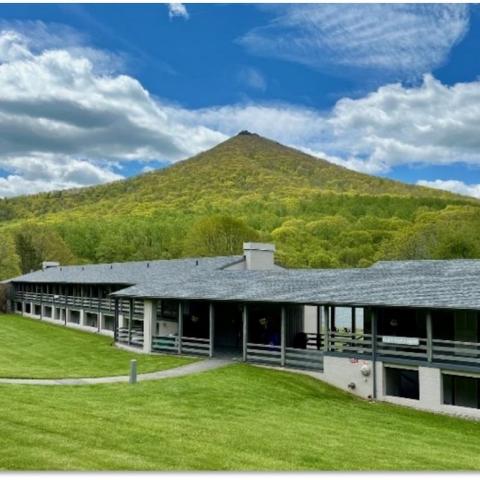
Crews working in March 2025 to repair and stabilize the Blue Ridge Parkway near Haw Creek Overlook, NC/NPS
While repairs to storm-battered sections of the Blue Ridge Parkway are underway, it will "take years" to repair some of the damage, according to the National Park Service.
Parkway officials, who have not responded to interview requests, issued a press release Thursday in which they discussed the widespread damage caused by Hurricane Helene last fall and how repair work was progressing. In addition to damage to Park Service facilities and resources, the park has identified at least 57 landslides of varying complexity impacting the Parkway itself across nearly 200 miles in North Carolina.
Since the hurricane, the Park Service has conducted hundreds of facility and resource assessments, cleared tons of debris, and reopened more than 312 miles of the 469-mile Blue Ridge Parkway in Virginia and North Carolina. In both states, widespread treefall, erosion, trail, and culvert damage occurred and many structures, both historic and non-historic, were heavily damaged, the release said.
"Critical public infrastructure was also compromised, and many significant cultural and natural landscapes were impacted," it added. "The restoration work needed is complex and some areas will take years to repair. Funding for long-term storm recovery will be available from multiple sources, including a portion of the more than $2 billion in supplemental disaster funding Congress allocated to the NPS."
“As with our surrounding communities, we have made significant progress, but the Parkway’s path to permanent repair and recovery will be a long one,” said Superintendent Tracy Swartout. “The damage to the Parkway is unprecedented in its nearly 100-year history. We ask our many neighbors and visitors to remain patient as we work to reopen sections of the park as quickly as possible.
Due to the severity of the hurricane, conditions on park roads and trails are evolving. Visitors are being told they should plan carefully for any trip along the Parkway, consult the park’s road status webpage and share travel plans with others in advance. For safety reasons, the park asks that people respect all closures, including trails within closed sections of the park.
While significant work is needed to address all Parkway damage, the NPS has begun emergency roadway repairs at eight slide locations to restore and stabilize the road, remove remaining debris, and repair guardrails near critical transportation networks. Initial project locations include (from north to south):
- Milepost 224.9, north of Doughton Park
- Milepost 284, Boone, NC, vicinity
- Milepost 306.8, south of Beacon Heights
- Milepost 342 to 343, near Spruce Pine, NC
- Milepost 375.6, near Weaverville, NC, at Bull Gap
- Milepost 380.5, north of Asheville, NC, near Haw Creek
- Milepost 401.6, north of Mt. Pisgah
- Milepost 421.8, Waynesville, NC, vicinity.
All road and trail use in closed sections of the Parkway is prohibited, as heavy construction equipment activity makes the area extremely dangerous for recreation. Estimated completion dates for this work range from late summer to early fall of 2025 and is funded by the U.S. Department of Transportation’s Federal Highway Administration’s Emergency Relief for Federally-owned Roads program.
The highest concentration of overall roadway and infrastructure damage along the Parkway occurred from the Linville Falls area, near milepost 317, south to Mount Mitchell State Park, near milepost 349. Along with the destruction of park facilities near Linville Falls, including the visitor center, picnic area comfort stations, and portions of the campground, park teams have documented more than four dozen landslides and other storm-related natural and cultural resource damage in those 38 miles of Parkway alone.
While the Parkway is open for normal traffic along all 217 of the miles in Virginia, recent ice storms have resulted in several winter storm closures. In the coming months, hurricane recovery work in Virginia will focus on damaged roadway and drainage repairs, hazard tree work, woody debris removal, culvert cleaning, removing siltation from mill ponds, repairing damage to historic and non-historic structures, trail clearing, and restoration of cultural and natural landscapes.
Current conditions and updates about the Parkway are found online at www.nps.gov/blri and the park’s social media platforms at @BlueRidgeNPS (Facebook, X, and Instagram). Photos and additional information regarding storm damage along the Parkway is available on the park’s website.



 Support Essential Coverage of Essential Places
Support Essential Coverage of Essential Places






